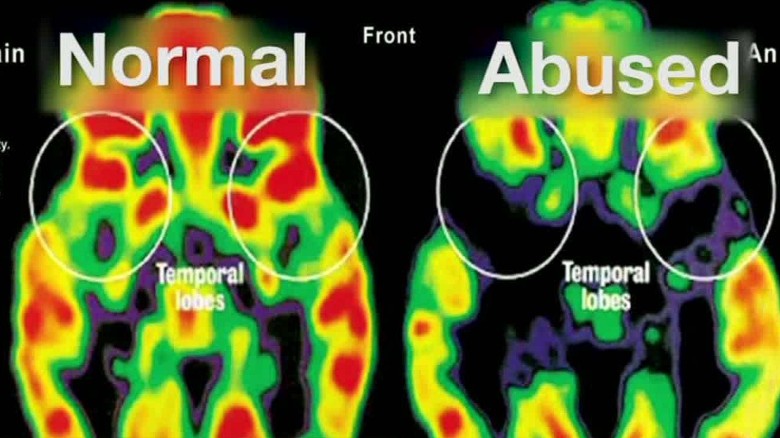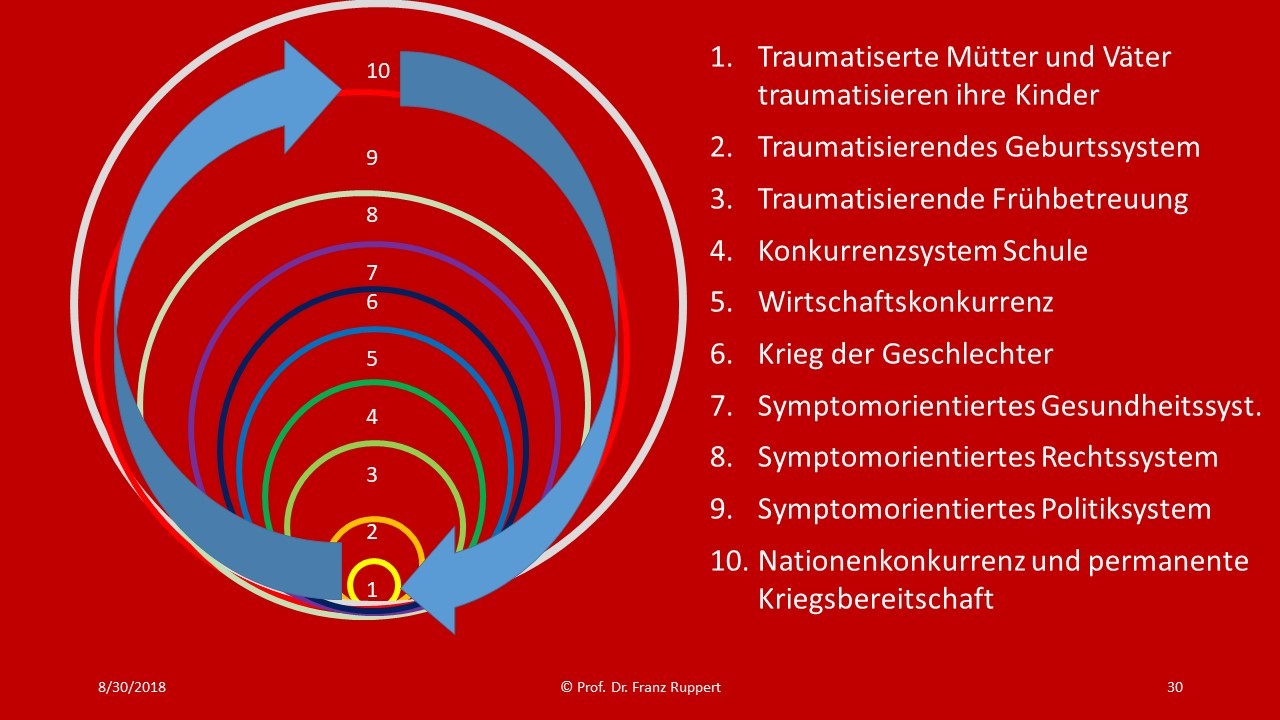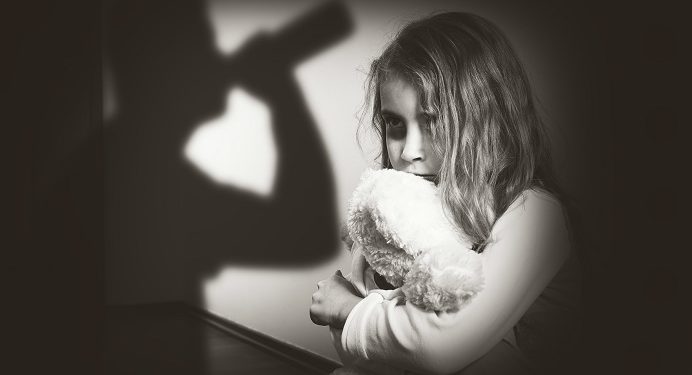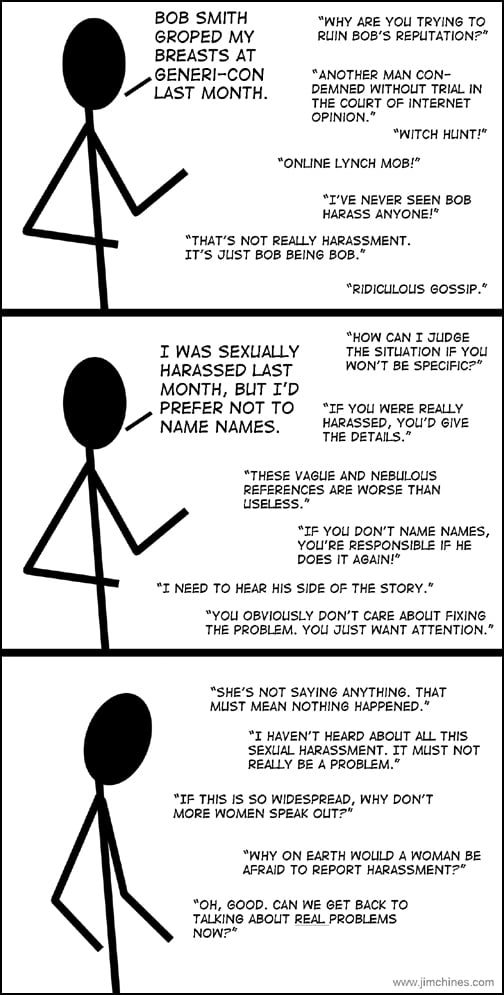Links zum Thema Trauma
Literatur
- Dr. Judith Lewis Herman (*1942) US-amerikanische Psychiaterin, Professorin für Klinische Psychologie, Harvard Medical School, Klinikprojektleiterin für Opfer von Gewalttaten, Autorin, Die Narben der Gewalt. Traumatische Erfahrungen verstehen und überwinden, Kindler, München, 11. Juni 1992, Droemer Knaur, 1994, Junfermann Verlag, 3. Auflage 4. Februar 2003
Klassiker der Psychotraumatologie
- Peter Riedesser (1945-2008) deutscher Kinder- und Jugendpsychiater, Traumaexperte, Gottfried Fischer, Lehrbuch der Psychotraumatologie, Reinhardt, München, 1998, UTB, Stuttgart, 4. Taschenbuchauflage 21. Mai 2009
- Gitta Sereny (1921-2012) britisch-deutsch-ungarische Historikerin, Biografin, freie Journalistin, Das deutsche Trauma. Eine heilende Wunde, Goldmann, München, 1. März 2004
- Sabine Bode (*1947) deutsche Journalistin, Buchautorin, Die vergessene Generation. Die Kriegskinder brechen ihr Schwei-
gen, Klett-Cotta, Stuttgart, 2004, erweiterte und aktualisierte Taschenbuchausgabe 2011, 20. Auflage 13. Juni 2015
- Dr. Anngwyn St. Just, US-amerikanische Sozialtraumatologin, Kulturhistorikerin, Psychotherapeutin, Autorin, Soziales Trauma. Balance finden in einer unsicheren Welt, Kösel, München 21. Juli 2005
- Dr. Stephen Porges (*1945) US-amerikanischer Professor für Psychiatrie und BioEnginneering, Leiter des Brain-Body Centers, medizinische Fakultät, Universität von Chicago, Illinois, Die Polyvagal-Theorie. Neurophysiologische Grundlagen der Therapie. Emotionen, Bindung, Kommunikation und ihre Entstehung, Junfermann Verlag, 2. Auflage 2010
- Peter Alan Levine (*1942) US-amerikanischer Biophysiker, Psychologe, Psychotraumatologe, Autor, Vom Trauma befreien. Wie Sie seelische und körperliche Blockaden lösen, Kösel, München, 1. Januar 2011
- Michaela Huber, Reinhard Plassmann, Thorsten Becker, Karl Heinz Brisch, Silke Brigitta Gahleitner, Petra Hafele, Peter Heinz, Transgenerationale Traumatisierung, Junfermann Verlag, 2. Auflage 1. Oktober 2012
- Pola Kinski (*1952) deutsche Schauspielerin, Autorin, Kindermund, Suhrkamp / Insel Verlag, Berlin, 15. Januar 2013, Taschenbuchausgabe 16. Juni 2014
Enthüllungsbuch, angeschrieben gegen den Mythos Kinski und dessen posthume Vergötterung
- Prof. Dr. Franz Ruppert (*1957) führender deutscher Psychotraumatologe, Psychotherapeut, Autor, Trauma, Bindung und Familienstellen. Seelische Verletzungen verstehen und heilen, Klett-Cotta, 30. Januar 2015
- Dr. phil. Udo Baer, deutscher Diplompädagoge, Gabriele Frick-Baer, Kriegserbe in der Seele. Was Kindern und Enkeln der Kriegsgeneration wirklich hilft, Beltz, 2. Auflage 3. November 2015
- Prof. Dr. Franz Ruppert (*1957) deutscher Professor für Psychologie, psychologischer Psychotherapeut, Autor, Wer bin ich in einer traumatisierten Gesellschaft? Wie Täter-Opfer-Dynamiken unser Leben bestimmen und wie wir uns daraus befreien,
Klett-Cotta, 3. Druckauflage 24. Februar 2019
- Prof. Dr. Franz Ruppert (*1957) führender deutscher Psychotraumatologe, Psychotherapeut, Autor, Liebe, Lust und Trauma. Auf dem Weg zur gesunden sexuellen Identität, Kösel-Verlag, München, 26. August 2019
- Luise Reddemann, Cornelia Dehner-Rau, Trauma verstehen, bearbeiten, überwinden, Narayana Verlag, 2020
- Dr. Bessel van der Kolk (*1943) niederländischer Psychiater, Autor, Das Trauma in Dir, Ullstein Taschenbuch, 23. Februar 2023
- Pete Walker, Posttraumatische Belastungsstörung. Vom Überleben zu einem neuen Leben, Narayana Verlag, 2023
- Laurence Heller, Entwicklungstrauma heilen
- Laurence Heller, Praxisbuch Entwicklungstrauma heilen
- Gopal Norbert Klein, Der Vagus-Schlüssel
- Aylin Thiel, Trauma ENDLICH überwinden
- Stefanie Stahl, Vom Jein zum Ja!
- Verena König, Trauma und Beziehungen
↑
Literature (engl.)
- Colin Ross, M.D. (*1950) Canadian psychiatrist, trauma expert, president of the International Society for the Study of Trauma and Dissociation (1993-1994), researcher, lecturer, author, Dissociative Identity Disorder. Diagnosis, Clinical Features, and Treatment of Multiple Personality, Wiley, 2nd edition 30. October 1996
- Jennifer J. Freyd, Ph.D. (*1957) US American professor of psychology, University of Oregon, editor of the Journal of Trauma & Dissociation, author, Betrayal Trauma. The Logic of Forgetting Childhood Abuse, Harvard University Press, reprint edition
6. February 1998
- Anne Michaels (*1958) Canadian poet, novelist, Fugitive Pieces, Vintage, 26. May 1998
It took the Michaels 10-12 years to write this book on trauma healing.
- Jennifer J. Freyd, Ph.D. (*1957) US American professor of psychology, University of Oregon, editor of the Journal of Trauma & Dissociation, author, Blind to Betrayal. Why We Fool Ourselves We Aren't Being Fooled, Wiley, 1st paperback edition
1. March 2013
- Daniel Shaw, LCSW, US American certified psychoanalyst, psychotherapist, cult member of the SYDA movement under Gurumayi (1981-1994), author, Traumatic Narcissism. Relational Systems of Subjugation, chapter "Traumatic Narcissism in Cults", Routledge, 1st edition 19. September 2013, 2014
Even among those who do leave cults, a common feeling is shame, at their own blindness, their hunger to believe, and grief at getting it wrong.
Featuring "intergenerational generation of narcissistic personalities" and the relational dynamics that sustain "systems of subjugation"
- Pete Walker, US American licensed marriage and family psychotherapist, author, Complex PTSD. From Surviving to Thriving. A Guide and Map for Recovering from Childhood Trauma, CreateSpace Independent Publishing Platform, 1st edited paperback edition 13. December 2013
- Bessel van der Kolk, Ph.D. (*1943) Dutch-American professor of psychiatry, researcher in post-traumatic stress, Boston University, educator, author, The Body Keeps the Score. Brain, Mind, and Body in the Healing of Trauma, Viking, 1st edition
25. September 2014
- Judith Lewis Herman, M.D. (*1942) US American psychiatrist, researcher, teacher, author, Trauma and Recovery. The Aftermath of Violence – From Domestic Abuse to Political Terror, Basic Books, 7. July 2015
- Pete Walker, US American licensed marriage and family psychotherapist, author, The Tao of Fully Feeling. Harvesting Forgiveness out of Blame, CreateSpace Independent Publishing Platform, paperback issue 2. November 2015
- Mark Wolynn, US American director of The Family Constellation Institute, author, It Didn't Start with You. How Inherited Family Trauma Shapes Who We Are and How to End the Cycle, Viking, 26. April 2016
- Dr. Kevin B. Skinner, US American marriage and family therapist (LMFT), sexual addiction therapist (CSAT), Treating Trauma from Sexual Betrayal. The Essential Tools for Healing, GrowthClimate, 11. March 2017
- David Hosier MSc, A Beginner’s Guide To Childhood Trauma. Types, Effects And Treatments, Amazon Services, Kindle edition, 16. Juni 2019
- Anneke Lucas (*1963) Belgian survivor of European elite child sex trafficking, founder of Liberation Prison Yoga (*2014), corrector of injustice, speaker, author, Quest for Love. Memoir of a Child Sex Slave, Unconditional Books, 21. June 2022
↑
Externe Weblinks
- Artikel über Peter Riedesser (1945-2008) deutscher Kinder- und Jugendpsychiater, Traumaexperte, Der Seelenorganisator, präsentiert von der überregionalen deutschen Wochenzeitung Die Zeit, Sabine Etzold, Nr. 22, 19. Mai 2004
- Reportage Die gute Seite des LSD, präsentiert von der überregionalen deutschen Wochenzeitung Die Zeit, Fritz Habekuß,
Nr. 13, 20. März 2014
- Interview mit Prof. Dr. Franz Ruppert (*1957) deutscher Professor für Psychologie, psychologischer Psychotherapeut, Autor, Traumatisierte Gesellschaft, präsentiert von dem alternativen online Magazin Manova, Gastgeber Florian Ernst Kirner,
1. September 2017
- Artikel Wie das Gehirn durch Trauma süchtig wird, präsentiert von der Publikation Somatische Emotionale Integration (SEI),
6. Oktober 2018
- Artikel (Vorlesefunktion aktiviert) Die Pseudo-Liebe. Eine Stellungnahme von Franz Ruppert zum allseits gelobten Dokumentarfilm "Elternschule", präsentiert von dem alternativen online Magazin Manova, Prof. Dr. Franz Ruppert (*1957) führender deutscher Psychotraumatologe, Psychotherapeut, Autor, 27. Oktober 2018
- Artikel Die Therapie mit Psychedelika kehrt zurück. Ältere Resultate mit Psychedelika gelten als wenig verlässlich. Doch neue Erkenntnisse scheinen deren Nutzen zu bestätigen., präsentiert von der Schweizer Tageszeitung Neue Zürcher Zeitung (NZZ), Nicola von Lutterotti, 16. Februar 2020
↑
External web links (engl.)
1. Gain self awareness.
2. Come out of the fog.
3. Locate original wound(s).
4. Release original emotions.
5. Grieve the loss from the original wound.
6. Experience healthy connection.
7. Reparent yourself.
8. Detach from external locus.
9. Re-compute negative core beliefs.
10. Clear away resentment.
11. Reprogram your mind.
12. Create a new story.
- Article Hereditary trauma, presented by ETH Zürich, Isabelle M. Mansuy, Ph.D., Swiss associate professor of molecular cognition, medical faculty, University Zürich, biology department, Swiss Federal Institute of Technology (ETH), Zürich,
14. April 2014
Extreme and traumatic events can change a person and affect their children and grandchildren.
- Article and Podcast interview with Bessel van der Kolk, Ph.D. (*1943) Dutch-American professor of psychiatry, researcher in post-traumatic stress, Boston University, educator, author, Childhood Trauma Leads to Brains Wired for Fear, presented by sideeffectspublicmedia.org, 3. February 2015
- Article featuring and video interview with Gabor Maté, M.D. drgabormate.com (*1944) Hungarian-Canadian physician, addiction expert, speaker, author, Trauma is the root cause of addiction, according to Dr. Gabor Mate, presented by Regina Leader-Post, Ashley Robinson, 22. June 2016
- Article Science Newsfrom research organizations. Not only trauma but also the reversal of trauma is inherited, presented by the US American news website for topical science articles Science Daily, University of Zurich, 23. June 2016
Behaviors caused by traumatic experiences in early life are reversible.
5-12% (10%) of Australian military personnel, police, ambulance personnel, firefighters and other rescue workers, have experienced PTSD.
40%-55% of sex workers, women fleeing domestic violence, survivors of childhood abuse and Indigenous Australians are affected by PTSD.
- Article Addiction doc says: It's not the drugs. It's the ACEs…adverse childhood experiences., presented by the publication Aces Too High News, Jane Ellen Stevens, 2. May 2017
- Article Why most rape victims never acknowledge what happened., presented by the British publication BBC Future, Christine Ro, 6. November 2018
- Blog article What Happens When Repressed Memories of Trauma Begin to Resurface, presented by the blogspot themighty.com, Alyssa Rossi, 5. July 2019
- Blog article Are Chronic Illness and Trauma Related? Here's What You Need to Know., presented by the blogspot themighty.com, Renee Fabian, 4. September 2019
- Article 3 Ways Unresolved Trauma Can Derail Your Relationships, presented by the US American men's initiative The Good Men Project, Annie Tanasugarn, Ph.D., 25. April 2021
1. When emotional escalation is in play, fight mode is also in play.
2. When compulsive or addictive behavior is in play, so is flight mode.
3. When emotional disconnection is in play, so is freeze mode.
Linkless articles
- Article Dissociation Isn't a Life Skill. Dissociation is technically a defense mechanism., presented by the US American bimonthly magazine Psychology Today, Sandra L. Brown M.A., 22. November 2012
"Dissociation is not a life skill. It doesn't help you move forward, it keeps you frozen in time."
Problematic issues
- Article Cults: Child Sex Abuse. U.S. Government Involved With Cults and Child Sex Abuse, presented by the publication WantToKnow, Fred Burks, excerpted from Timothy M. Silver, Lifting the Veil. An Investigative History of the United States Pathocracy, chapter 13, published 12. March 2014
- Article featuring Fiona Barnett, Australian MKUltra mindcontrol survivor, whistleblower, Satanic Pedophilia Network Exposed in Australia – It Starts at the TOP, Just Like in the USA and UK, presented by the publication humansarefree.com, 15. February 2016
Linkless articles
- Article Witches, Trauma, and Depth Psychology? The Practice of Psychology Today, presented by the Pacifica Graduate Institute, Nikole Hollenitsch, 28. June 2017
↑
Weblinks (engl.) – Anneke Lucas
Articles and interviews featuring Anneke Lucas (*1963) Belgian survivor of European elite child sex trafficking, founder of Liberation Prison Yoga (*2014), corrector of injustice, speaker, author Recovering over a period of forty years from extreme trauma inflicted upon her in childhood (1969-1975),
Lucas claims she was subjected to six hours of rape each week by 200 aristocratic pedocriminals from age 6-10.
| Offering | Heading | Publication | Release·date |
| Interview | Anneke Lucas Is Bringing a Quiet Revolution to the Prison System | US American social platform ESME, Gina Zucker | 27. January 2016 |
| Interview | Former child sex slave sold into Belgian aristocratic paedophile ring where boys and girls were tortured and KILLED reveals the horrors of her five years of abuse | Mail Online | 19. January 2017 |
| Article | Human Trafficking in Hotels: New York Lawmaker Teams Up With Advocate | NBC News, Kalhan Rosenblatt | 19. March 2017 |
| Article | Finding Forgiveness in Healing From Trauma | The Shift Network • Catalyst | 31. March 2017 |
| Article | Bill Seeks to Enlist New York Hotels to Help Fight Sex Trafficking | The New York Times Magazine, Brian Bossetta | 16. April 2017 |
| Blog article | Incest is the secret formula to keep families attached, to keep fear-based protection of authority figures alive, and to preserve the hierarchic structure of the capitalist system. | Blogspot annekelucas.com | 14. July 2017 |
| Anneke Lucas: "Incest is the secret formula to keep families attached, to keep fear-based protection of authority figures alive, and to preserve the hierarchic structure of the capitalist system. […] Today it still takes tremendous courage to face incest, because it is so deeply ingrained in the fabric of Western culture." |
| Article | #MeToo Rouses a Yoga Community | The Shift Network | 9. July 2018 |
| Removed article | Survivor Of Elite Child Sex Slavery Discloses Her Incredible Escape & Her Healing Journey | Online publication Collective Evolution, Richard Enos | 13. January 2019 |
| Removed article | The Most Powerful Testimony I've Ever Heard: My Interview With Anneke Lucas | Online publication Collective Evolution, Richard Enos | 15. January 2019 |
| Interview | ''An interview by Kai Kreutzveldt | Website annekelucas.com, Kai Kreutzveldt | 9. May 2021 |
↑
Audio- und Videolinks
- Video Podiumsdiskussion mit Dr. phil. Daniele Ganser (*1972) schweizerischer Energie- und Friedensforscher, Prof. Franz Ruppert (*1957) führender deutscher Psychotraumatologe, Psychotherapeut, Autor, Birgit Assel, deutsche Traumatherapeutin, Friedensforscher trifft Traumaforscher – Wo sind die Gemeinsamkeiten?, präsentiert von der deutschen Online-Plattform für investigativen Journalismus KenFM, Gastgeber Ken Jebsen (*1966) deutsch-iranischer Fernseh- und Radiomoderator, freischaffender Reporter (*2011), Hannover, 2019, KenTube Film, 1:43:31 Dauer, eingestellt 12. Februar 2019
- Videovortrag von Sandra Norak, deutsche ehemalige Prostituierte, Aktivistin, Bloggerin, Prostitution ist unvereinbar mit der Menschenwürde, veranstaltet von dem 3. Weltkongress gegen sexuelle Ausbeutung von Frauen und Mädchen, Universität Mainz, YouTube Film, 17:54 Minuten Dauer, 5. April 2019
"Prostituierte Frauen funktionieren und ertragen schlimmste Dinge, weil man sie gebrochen hat, weil man ihnen ihre Seele genommen hat und sie in einem Leben feststecken, in dem sie nie sein wollten, aus dem sie aber nicht mehr rauskommen."
- Videointerview mit Michael Hüter (*1968) österreichischer Kindheitsforscher, Historiker, Aktivist, Verleger, Autor, Kindheitsforscher Michael Hüter: "Eine ganze Generation wurde kollektiv traumatisiert", präsentiert von dem vom russischen Staat finanzierten Auslandsfernsehsender Russia Today (RT), Gastgeberin Margarita Bityutski, YouTube Film, 47:58 Minuten Dauer, eingestellt 2. Oktober 2020, neu eingestellt auf Facebook 26. May 2023
Nach einer Studie "der pronova BKK" beobachteten 150 Kinderärzte, dass zu 89% vermehrte psychische Probleme bei Kindern aufgrund der politischen Covid19-Maßnahmen. 37% der Kinderärzte diagnostizieren eine Zunahme körperlicher Beschwerden bei Kindern. Eine Studie der Privaten Fachhochschule Göttingen erkannte, dass die Corona-Maßnahmen Depressionen verstärken und zu posttraumatischen Belastungsstörungen führen.
↑
Audio- und Videolinks – Franz Ruppert
- Videopräsentation von Prof. Dr. Franz Ruppert (*1957) deutscher Professor für Psychologie, psychologischer Psychotherapeut, Franz Ruppert: Trauma, Angst und Liebe, veranstaltet von dem Bildungscenter der Arbeiterkammer Vorarlberg, Moderator Franz Josef Köb, Feldkirch, 10. April 2013, YouTube Film, 1:43:26 Dauer, eingestellt 12. April 2013
Mehrgenerationelle Traumatologie – Therapie von Symbiosetraumata
Frühkindliche Traumatologie
- Videointerview mit Prof. Dr. Franz Ruppert (*1957) führender deutscher Psychotraumatologe, Psychotherapeut, Autor, Die traumatisierte Gesellschaft – Prof. Dr. Franz Ruppert, präsentiert von dem deutschen alternativen online Fernsehsender NuoFlix / SteinZeit TV, Leipzig, Gastgeber Robert Stein (*1970) deutscher Referent, TV-Moderator, Journalist, Odysee Film, 1:02:56 Dauer, aufgenommen Mai 2020, eingestellt 29. Juli 2020
Analyse des "Coronoterrorismus", der "Coronadiktatur" 2020:
In einer traumatisierten Welt gibt es eine permanente Opfer-Täter(Retter)-Dynamik.
Traumablinde Leitfiguren kontrollieren / traumatisieren Traumatisierte, die nicht bereit sind ihr eigenes Trauma anzuschauen und zu integrieren.
- Videointerview mit Prof. Dr. Franz Ruppert (*1957) führender deutscher Psychotraumatologe, Psychotherapeut, Autor, Reali-
tätsverlust und Heilung – Franz Ruppert im Gespräch, präsentiert von der YouTube-Plattform Gunnar Kaiser, Gastgeber Gunnar Kaiser (1976-2023) deutscher Philosoph, Lehrer, Vlogger, Schriftsteller, YouTube Film, 56:55 Minuten Dauer, einge-
stellt 23. Dezember 2020
↑
Audio- und Videolinks – ⚡⚠ Sozio-problematische Themen
- Video Kommentar von Eckhard Raabe, deutscher Theologe, Kommentar zur Woche: Nachruf auf Klaus Kinski, YouTube Film, 1:59 Minuten Dauer, eingestellt 17. Januar 2013
- Video Fernsehinterview zum Thema ⚡ Systematischer ritueller Kindesmissbrauch und Kindesopferung mit dem überlebenden Zeugen Jessie Marsson Ritueller Missbrauch, präsentiert von dem deutschen Fernsehbildungskanal Bewusst.TV, Gastgeber Jo Conrad (*1958) deutscher Fernsehmoderator, Netzaktivist, esoterischer Autor, YouTube Film,
1:09:23 Dauer, Sendetermin 12. September 2013, eingestellt 23. Januar 2015
- Video presentation by Mark Wolynn, US American director of The Family Constellation Institute, author, It Didn't Start With You, Mark Wolynn, sponsored by Science And Nonduality (SAND), April 2016, YouTube film, 31:46 minutes duration, posted
9. February 2017
- Videointerview mit Prof. Dr. Franz Ruppert (*1957) führender deutscher Psychotraumatologe, Psychotherapeut, Autor, Franz Ruppert (Thema: "Trauma und Sexualität"), präsentiert von der deutschen Online-Plattform für investigativen Journalismus KenFM, Sendeformat "Der Freie Fall", Gastgeberin Lena Lampe, KenTube Film, 1:27:56 Dauer, eingestellt 1. Mai 2020
↑
Dokumentationen und Filme
Transgenerationale Weitergabe von individuellen Traumata wie Kriegs-, Missbrauchs- oder Fluchterfahrungen
↑
Audio and video links (engl.)
- Video presentation by George A. Bonanno, Ph.D., US American professor of clinical psychology, Teachers College, Columbia University, trauma researcher, author, Measuring human resilience, YouTube film, 19:52 minutes duration, posted 2. October 2012
Human beings coping with loss, trauma and other forms of extreme adversity
"There isn't one thing that predicts resilience. It's not two things. It is not necessarily in us."
- Audio presentation by Gabor Maté, M.D. drgabormate.com (*1944) Hungarian-Canadian physician, addiction expert, speaker, author, Psychedelics in Unlocking the Unconscious: From Cancer to Addiction, sponsored by Psychedelic Science 2013, 18.-23. Oakland, California, 20. April 2013, YouTube film, 1:00:35 duration, posted 24. July 2013
- Video presentation by Bessel van der Kolk, Ph.D. (*1943) Dutch-American professor of psychiatry, researcher in post-traumatic stress, Boston University, educator, author, Terror, Trauma, and the Sacred: Psychological, Clinical, and Religious Perspectives, presented at The 2014 Merle Jordan Conference, Session 3, sponsored by The Albert and Jessie Danielsen Institute, Boston University, 20. June 2014, YouTube film, 1:21:15 duration, posted 12. August 2014
- Video presentation (Keynote Speaker Series) by Steve Hoskinson, M.A., US American social trauma therapist, founder of OrganicIntelligence, public speaker, teacher, Steve Hoskinson – What is trauma?, sponsored by Prescott College, recorded 16. January 2015, YouTube film, 4:25 minutes duration, posted 21. March 2015
On the role of the amygdala post-trauma
Project Monarch is a mind control ('MK-ULTRA') program which is designed to create 'sex slaves'.
- Video presentation by Diane Langberg, Ph.D., US American psychologist, international speaker, Complex Trauma: Understanding and Treatment, sponsored by the Forum of Christian Leaders FOCLonline, YouTube film, 51:14 Minuten Dauer, eingestellt 21. January 2016
- Video presentation by Seth Porges, US American science and technology journalist, television commentator, The Polyvagal Theory: The New Science of Safety and Trauma, presented by the monthly presentation series Nerd Nite, YouTube film, 28:09 minutes duration, posted 3. November 2017
1. Your autonomic state is the filter through which you experience the world.
2. Environmental cues can magically transform your physiology – how people perceive you.
3. This automatic, but you can control it if you know how.
4. Trauma is physiological, not just psychological.
5. Feeling safe is necessary for living a good life and bonding with others.
6. Bonding with others is necessary for good health.
7. When people don't feel safe, they don't think critically (ask any politician!).
8. The simplest way to make people like you (including dogs and children!): Use your facial muscles. and speak with prosody.
9. We can fix it! Simply feeling "safe" can jumpstart the healing process.
Anally raped as a 13 year old Walawender was healed of his abuse by a Native American tribe, the Hualapai, through process that included prayer, chanting, incense, dancing, and even sleeping (without sex) with a virgin female to help heal, rebalance, realign and integrate his sexual orientation and foundational energies back into a state of health.
"We need to call out predators for what they are, sick in the diseased sense of the word. Predators have fallen to a psychospiritual disease [Wetiko] and addiction with devastating effects to all of whom it touches including the perpetrator. This disease, is vampire-like in its expression, sucking the spiritual innocence and energy and vitality from a usually younger, uncertain person."
- Audio interview with Dr. Julie Brown Yau, US American depth psychology, Transforming Trauma: The Role of the Biofield., presented by the publication/YouTube platform Consciousness and Healing Initiative (CHI), founder, sponsor and host Shamini Jain, Ph.D., Indian US American professor of clinical psychology, psychoneuroimmunology (PNI) researcher, chair of research committee of the Center for Integrative Medicine, UC San Diego, YouTube film, 1:20:48 duration, posted 6. October 2018
- Video interview with Gabor Maté, M.D. drgabormate.com (*1944) Hungarian-Canadian physician, addiction expert, speaker, author, Dr Gabor Mate on the lasting affects of childhood trauma, presented by the Scottish TV station STV News, program "Scotland Tonight", host Rona Dougall, YouTube film, 22:00 minutes duration, posted 10. June 2019
- Keynote speech by Gabor Maté, M.D. drgabormate.com (*1944) Hungarian-Canadian physician, addiction expert, speaker, author, Trauma as disconnection from the self, presented at The ACEs to Assets Conference, sponsored by Adverse Childhood Experiences (ACEs)-Aware Scotland, Glasgow, 11. June 2019, YouTube film, 1:13:07 duration, posted 7. July 2019
↑
Audio and video links (engl.) – Anneke Lucas
Audios and Videos featuring Anneke Lucas (*1963) Belgian survivor of European elite child sex trafficking, founder of Liberation Prison Yoga (*2014), corrector of injustice, speaker, author Recovering over a period of forty years from extreme trauma inflicted upon her in childhood (1969-1975),
Lucas claims she was subjected to six hours of rape each week by 200 aristocratic pedocriminals from age 6-10.
| Type | Offering | Heading | Sponsor ♦ Location ♦ P-Date | Minutes duration | Release·date |
| Audio | Radio interview | Incredible Story Of How A Child Trafficking Survivor Overcome The Horrific Past: Anneke Lucas | Nri Samay live Radio,
host Srihari Atluri | 43:35 | Recorded 15. November 2014
Posted 16. November 2014 |
Anneke Lucas: "When I was abused as a child the main element that stayed with me for so many years is that I was made to feel that I was evil. This is an inherent part of any kind of abuse that the victim is being turned into the perpetrator by the perpetrator as a neccessary means to justify the act.
I was vilified and called terrible names. And of course I believed all of that. More than the physical violence, there was the act of transferring some stigmatized, tabooed sense of themselves, something they could not live with. They made me feel that I was really dirty, that I was really worthless.
I was made the container, really serving as a mother, I believe, of very disturbed adults." Minute 15:04 |
| Audio | Podcast interview | Pedophile Ring Survivor Anneke Lucas Soundcloud MP3
Best Of – Pedophile Ring Survivor – Anneke Lucas | The Mental Illness Happy Hour, host Paul Gilmartin, US American stand-up comedian | 2:08:10 | 2. October 2015
8. July 2022 |
| Audio | Podcast interview | "Abuse of Power" – Liberation Prison Yoga | jbrownyoga.com, host Jay Brown | 1:41:56 | 20. June 2016
25. November 2016 |
| Audio | Apple podcast interview | Anneke Lucas on Being Sex Trafficked, Trauma, and Liberation, podcast #22 | Weekly podcasts Chitheads,
host Jacob Kyle, Apple podcast | 1:26:00 | 4. August 2016 |
| YouTube video | Testimonial
Presentation | Deathless: Surviving Sex Traf-
ficking and the Capitalist State | Real Women Real Stories | 5:30 | 3. December 2016 |
| YouTube video | Testimonial
Presentation | Anneke Lucas Talks About Her Mom, Society And Emotional Maturity | Real Women Real Stories | 5:30 | 3. December 2016 |
| YouTube video | Testimonial
Presentation | Anneke Lucas: We Live In a Rape Culture (!) | Real Women Real Stories | 4:54 | 17. December 2016 |
| YouTube video | Testimonial | Girls & Women. My Name Is Anneke Lucas and I Was a Sex Slave to Europe's Elite at Age 6 | Global Citizen | 6:48 | 19. December 2016 |
| YouTube video | Testimonial | [https://www.youtube.com/watch?v=AYNfk8amyVo|‘I was raped 1716 hours before I was 12 years old” Former sex slave exposes pedophilia pizzagate]] | In the Now | 6:19 | 20. December 2016
5. May 2018 |
| YouTube Video | Bekenntnisrede | Ich wurde als Kind hunderte Stunden lang vergewaltigt Opfer elitärer ritueller Missbrauch | Global Citizen | 6:19 | 26. Dezember 2016
22. November 2017 |
| Removed YouTube video | Interview | Healing journey of former child-sex slave, Anneke Lucas, in an elite-pedophile network | SmokeReality Free Your Mind, host Keyvan Davani | 1:20:44 | 11. February 2017 |
| YouTube video | Testimonial
Presentation | From Child Sex Slavery to Victory – My Healing Journey | TEDx Talks, Klagenfurt, Austria, 17. June 2017 | 18:14 | 26. June 2017 |
| Audio | Podcast interview | Anneke Lucas – "Conspiracy of Patriarchy" – Teacher, Writer, Speaker, founder of Liberation Prison Yoga | jbrownyoga.com, host Jay Brown | 1:34:12 | 4. December 2017 |
| YouTube video | Interview | Anneke Lucas on Restoring the Female Principle Through Healing From Personal and Global Trauma | The Shift Network,
host Phil Bolsta | 1:20:06
transcript | 24. April 2018
25. April 2018 |
| YouTube audio | Interview | Anneke Lucas – discussion | US American podcast Spirit Matters Talk, host Philip Goldberg | 12:06 | 16. July 2018 |
| Video | Interview | Overcoming Elite Child Sex Slavery & Pedophilia – Anneke Lucas
Part 1
Part 2
Part 3
Part 4 | Collective Evolution TV (CETV),
founder and moderator Joe Martino, host Richard Enos | 1:03:18
1:04:24
1:11:50
46:55 | 17. Jan 2019
18. Jan 2019
19. Jan 2019
20. Jan 2019 |
| In this 4-part CETV interview Anneke Lucas shares her childhood filled with extreme abuse, her exit from elite pedocriminality and her healing journey abroad. |
| Removed video | Podcast interview | SRA Survivor Anneke Lucas | US American podcast, host Tiffany FitzHenry | 1:50:20 | 29. October 2019 |
| YouTube video | Podcast interview | Recovering From Unimaginable Evil,
episode 441 | US American web radio station Skeptiko Science at the tipping point, founder and host Alex Tsakiris | 1:06:25 | 18. February 2020 |
| YouTube video | Presentation | (UNCUT) Anneke Lucas: Sold by my mother into a pedophile network at six years of age | RealWomen/RealStories | 36:13 | 26. November 2020 |
| YouTube video | Presentation | Anneke Lucas: Former sex slave reveals horrors of abuse (Most Viewed Moments) | RealWomen/RealStories | 38:22 | 24. June 2022 |
| YouTube video | Interview | Anneke Lucas Interview & Talk – Sex Trafficking Victims and Mindfulness | US American podcast Spirit Matters Talk, host Philip Goldberg | 43:14 | 1. July 2022 |
| Rumble video | Interview | Anneke Lucas: "Talking about the darkest thing in humanity and love at the same time (part 1) | EllaSter, Amsterdam, NL | 1:03:59 | 23. October 2022 |
| Rumble video | Interview | Anneke Lucas: “We have to be empowered” (part 2) | EllaSter, Amsterdam, NL | 46:17 | 29. October 2022 |
↑
Audio and video links (engl.) – Colin Ross
Audios und Videos featuring Colin Ross, M.D. (*1950) Canadian psychiatrist, trauma expert, president of the International Society for the Study of Trauma and Dissociation (1993-1994), researcher, lecturer, author
↑
Documentaries and movies
- 4 hours long video documentary Leaving Neverland, directed and produced by Dan Reed, British filmmaker, presented by the US American premium cable and satellite television network HBO, released 4. March 2019, originally posted by Pink Channel
4. March 2019
It took Wade Robson 32 years to expose his pedocriminal older friend and superstar Michael Jackson in a 4 hours long documentary. Robson lived the lie for 30 years. To undo the lie he may not take another 30 years.
Note: This video is blocked in the United States, United Kingdom, Ireland, and Canada.
- Video talkshow panel with Wade Robson (*1982) Australian recovering victim and James Safechuck, US American recovering victim, Dan Reed, British filmmaker and producer, "After Netherland" – Oprah Winfrey Full Interview 'Leaving Neverland' Michael Jackson Accusers, aired and recorded right after the television premiere of the documentary 'Leaving Neverland' in the United States, 4. March 2019, host Oprah Winfrey (*1954) US American actress, talk show host, billionaire entrepreneur, visionary philanthropist, YouTube film, 3:34 of 57:32 minutes duration, originally posted by Pink Channel 6. March 2019, excerpt posted
1. March 2019
Host Oprah Winfrey warned about the inevitable repercussions coming from disbelieving skeptical fans, "They are coming after us, gonna get us."
↑
|









